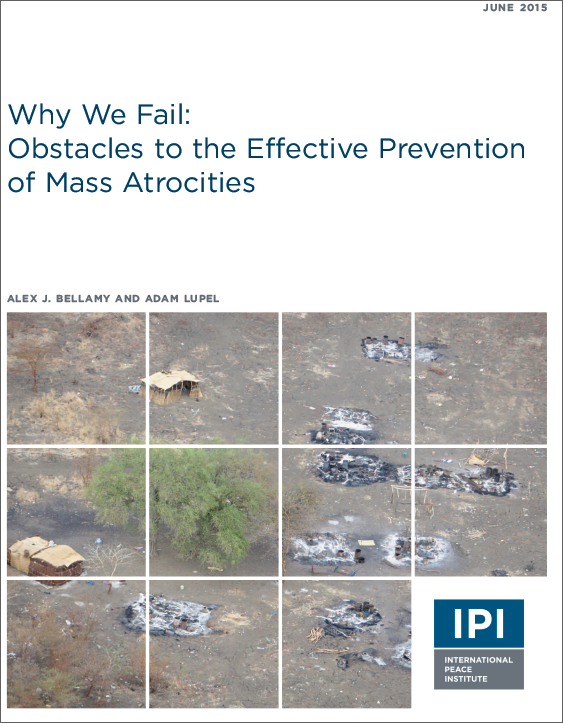 In the twenty years since the Rwandan genocide, the United Nations has developed an extensive body of policies, principles, and institutions dedicated to preventing mass atrocity crimes. But in recent years the killing of unarmed civilians has become all too prevalent again, from Syria to Iraq and South Sudan to the Central African Republic. So why does atrocity prevention fail?
In the twenty years since the Rwandan genocide, the United Nations has developed an extensive body of policies, principles, and institutions dedicated to preventing mass atrocity crimes. But in recent years the killing of unarmed civilians has become all too prevalent again, from Syria to Iraq and South Sudan to the Central African Republic. So why does atrocity prevention fail?
This is the central question addressed in the International Peace Institute’s new report, “Why We Fail: Obstacles to the Effective Prevention of Mass Atrocity.” The report explores the principal obstacles to effective prevention efforts and the strategies needed to improve the UN’s ability to respond. It considers the UN’s opportunities and constraints in different contexts, where the world body has a substantial field presence or limited or no presence on the ground.
The authors identify significant gaps between what the UN is expected to do in terms of preventing atrocities and what it is configured to do. In particular, they show that the response to the problem of atrocity crimes remains largely ad hoc. As such they recommend the development of a comprehensive, system-wide strategy for preventing atrocity crimes that would address five key considerations:
- A more systematic and comprehensive approach to early warning and assessment;
- Ways to mainstream atrocity prevention in the UN system’s daily work;
- Procedures for determining when atrocity prevention ought to be prioritized;
- Methods to improve the UN’s diplomatic engagement, public messaging, monitoring and assessment, and partnerships to respond to potential atrocity crimes;
- Advice on the most appropriate configurations for the UN’s field presence in countries experiencing risk of atrocity crimes.







